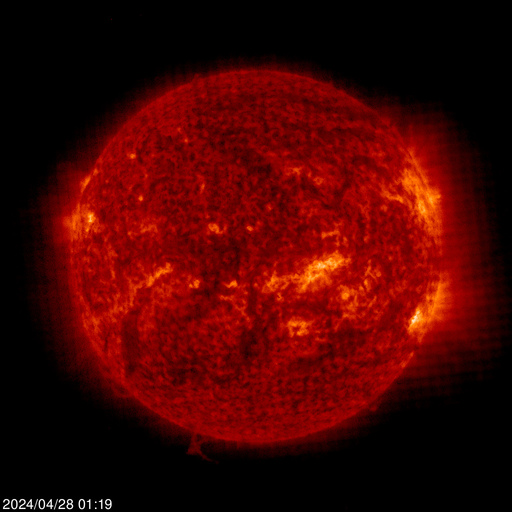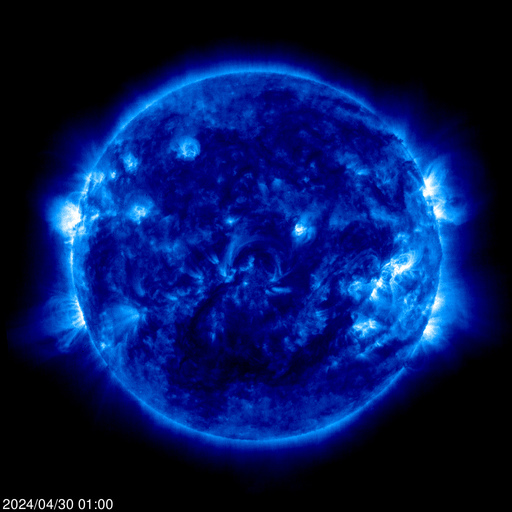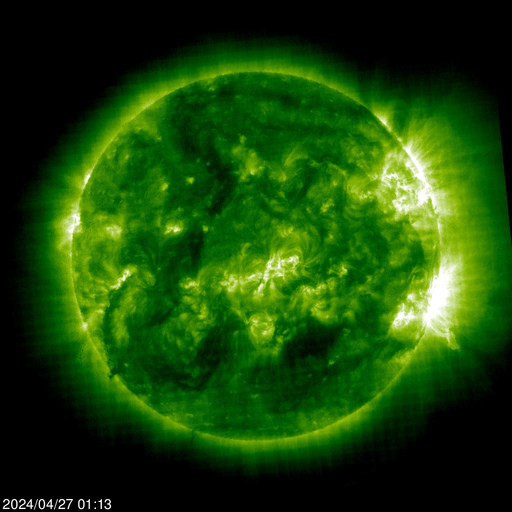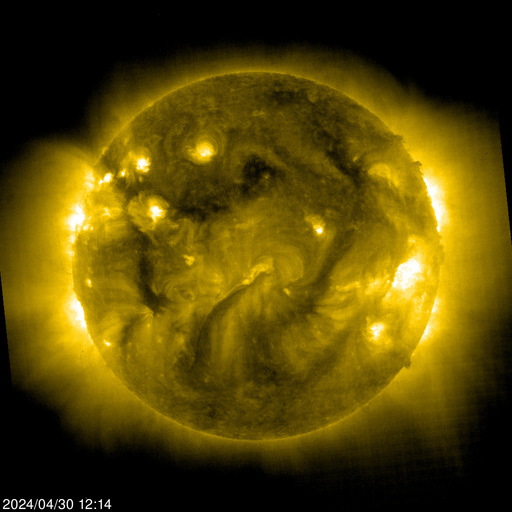






304 EIT (Extreme ultraviolet Imaging Telescope) images the solar atmosphere at several wavelengths, and therefore, shows solar material at different temperatures. In the images taken at 30.4 nanometres the bright material is at 60,000 to 80,000 degrees Kelvin. The hotter the temperature, the higher you look in the solar atmosphere 171 EIT (Extreme ultraviolet Imaging Telescope) images the solar atmosphere at several wavelengths, and therefore, shows solar material at different temperatures. In the images taken at 17.1 nanometres the bright material is at 1 million degrees. The hotter the temperature, the higher you look in the solar atmosphere. 195 EIT (Extreme ultraviolet Imaging Telescope) images the solar atmosphere at several wavelengths, and therefore, shows solar material at different temperatures. In the images taken at 19.5 nanometres the bright material is at 1.5 million degrees. The hotter the temperature, the higher you look in the solar atmosphere. 284 EIT (Extreme ultraviolet Imaging Telescope) images the solar atmosphere at several wavelengths, and therefore, shows solar material at different temperatures. In the images taken at 28.4 nanometres the bright material is at 2 million degrees. The hotter the temperature, the higher you look in the solar atmosphere. The HMI (Helioseismic and Magnetic Imager) images shown here are taken in the continuum near the Ni I 677 nanometre line. The most prominent features are the sunspots. This is very much how the Sun looks like in the visible range of the spectrum (for example, looking at it using special 'eclipse' glasses: Remember, do not ever look directly at the Sun!). The magnetogram image shows the magnetic field in the solar photosphere, with black and white indicating opposite polarities. |

Data courtesy of NASA |